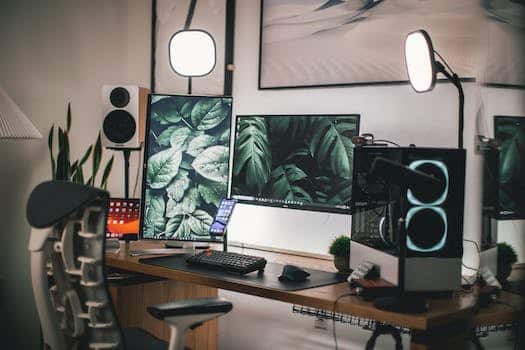Remote Desktop is a powerful tool that allows users to access their computer or server from a remote location. Understanding the default settings of Remote Desktop is crucial for ensuring a secure and efficient remote connection. In this article, we will delve into the various default settings of Remote Desktop and shed light on how they impact the overall functionality and security of the remote access process.
- 1. Introduction
- 1.1. What is Remote Desktop?
- 1.2. Benefits of Using Remote Desktop
- 1.3. Understanding Default Settings
- 2. Remote Desktop Default Settings
- 2.1. Security Settings
- 2.2. Display Settings
- 2.3. Audio Settings
- 2.4. Clipboard Settings
- 2.5. Printer Settings
- 3. Customizing Default Settings
1. Introduction
Remote Desktop is a powerful feature that allows users to connect to a computer remotely. It enables individuals to access their desktop and use applications on a remote machine as if they were sitting in front of it. Understanding the default settings of Remote Desktop is crucial for ensuring a secure and efficient remote connection. This article will delve into the various aspects of Remote Desktop default settings and provide insights on how to optimize them for a seamless remote desktop experience.
1.1. What is Remote Desktop?
Remote Desktop is a technology that allows users to connect to and control a computer from a remote location. It enables individuals or IT professionals to access and use their desktop or laptop computers from anywhere with an internet connection. This remote access functionality is particularly useful for businesses, remote workers, and IT support teams who need to manage and troubleshoot computers without being physically present. With Remote Desktop, users can view the remote computer’s screen, access files and applications, and perform tasks as if they were sitting in front of the actual machine. It provides a convenient and secure way to work remotely or provide remote assistance.
1.2. Benefits of Using Remote Desktop
Remote desktop is a powerful tool that allows users to access their computer or a server remotely from another device. It enables users to control and operate their computer as if they were sitting right in front of it. This technology has numerous benefits that make it an essential tool for both individuals and businesses.
One of the key advantages of using remote desktop is the convenience it offers. With remote desktop, users can access their computer or server from anywhere in the world, as long as they have an internet connection. This means that users can work on their files, access important documents, or run applications from home, while traveling, or even when on vacation.
Another benefit is increased productivity. Remote desktop allows users to multitask and easily switch between different applications or files on their remote computer. This eliminates the need to constantly transfer files between devices or carry multiple devices with you. Additionally, it enables collaboration and remote teamwork, as multiple users can access and work on the same computer simultaneously.
Security is also a major advantage of using remote desktop. The data transferred between the remote device and the computer or server is encrypted, ensuring that sensitive information remains secure. In addition, remote desktop allows for centralized management and control, making it easier to implement security measures and updates across multiple devices.
Furthermore, remote desktop provides a cost-effective solution. By using remote desktop, businesses can save on hardware and maintenance costs, as there is no need to invest in separate computers or servers for each employee. It also reduces the need for physical office space, as employees can work remotely.
In conclusion, remote desktop offers a wide range of benefits including convenience, increased productivity, enhanced security, and cost savings. Whether for personal use or business needs, remote desktop is a valuable tool that streamlines workflow and improves efficiency.
1.3. Understanding Default Settings
Remote Desktop is a powerful tool that allows users to connect to and control a computer remotely. It is commonly used in professional settings to enable remote access and support. When using Remote Desktop, it is important to understand the default settings that come with the software.
The default settings for Remote Desktop determine the behavior and security of the connection. These settings are preconfigured by the operating system and can be adjusted according to the user’s requirements.
By default, Remote Desktop allows connections from computers running any version of Windows. However, it is recommended to restrict access only to trusted computers to enhance security. This can be done by adjusting the settings to allow connections only from specific IP addresses or by implementing network-level authentication.
Another default setting is the option to allow connections only from computers running Remote Desktop with Network Level Authentication. This setting provides an additional layer of security by requiring the remote computer to authenticate itself before establishing a connection.
The default settings also include options for screen resolution and color depth. By default, Remote Desktop adjusts these settings based on the client’s configuration. However, users can customize these settings to optimize performance or accommodate specific requirements.
Understanding the default settings for Remote Desktop is crucial for ensuring a secure and efficient remote connection. By familiarizing oneself with these settings, users can make informed decisions and tailor the configuration to their specific needs.
2. Remote Desktop Default Settings
Remote Desktop Default Settings
Remote Desktop is a powerful feature that allows you to connect to a remote computer and control it as if you were sitting right in front of it. When using Remote Desktop, there are certain default settings that you should be aware of to ensure optimal performance and security.
1. Authentication: By default, Remote Desktop uses Network Level Authentication (NLA) to verify the identity of the user before establishing a connection. This adds an extra layer of security by requiring the user to enter their credentials before accessing the remote computer.
2. Encryption: Remote Desktop uses strong encryption algorithms by default to protect data transmitted between the local and remote computers. This ensures that your session remains secure and prevents unauthorized access to sensitive information.
3. Clipboard Redirection: By default, Remote Desktop allows clipboard redirection, which means you can copy and paste text or files between the local and remote computers. However, for security reasons, it’s recommended to disable this feature if you’re connecting to an untrusted remote computer.
4. Printer and Drive Redirection: Remote Desktop also supports printer and drive redirection, allowing you to print documents or access files stored on your local computer from the remote session. These features are enabled by default, but you can choose to disable them if needed.
5. Audio Redirection: By default, Remote Desktop disables audio redirection, which means you won’t hear any sound from the remote computer. This can be useful in certain scenarios where audio is not required, or if you’re on a slow network connection and want to conserve bandwidth.
6. Idle and Disconnect Timeout: Remote Desktop has default timeout settings for idle and disconnected sessions. If a session is idle for a certain period of time, it will be automatically disconnected to free up resources. You can adjust these timeout settings based on your preferences and requirements.
By understanding and configuring the default settings of Remote Desktop, you can enhance the security, performance, and overall experience when remotely accessing a computer.
2.1. Security Settings
When it comes to remote desktop default settings, it is important to prioritize security. By implementing the right security settings, you can ensure that your remote desktop connection remains safe from potential threats. Here are some key security settings to consider:
1. Enable Network Level Authentication (NLA): NLA adds an extra layer of security by requiring users to authenticate themselves before a remote desktop session is established. This helps in preventing unauthorized access.
2. Use Strong Passwords: Ensure that strong passwords are used for all user accounts involved in remote desktop connections. A strong password includes a combination of uppercase and lowercase letters, numbers, and special characters.
3. Limit User Access: Grant remote desktop access only to authorized users. Restricting access to a limited number of trusted individuals reduces the risk of unauthorized entry and potential security breaches.
4. Enable Firewall: Activate the firewall on the remote desktop host machine to block any unauthorized incoming connections. This helps in protecting against malicious attacks.
5. Regularly Update Software: Keep the remote desktop software and all related applications up to date to benefit from the latest security patches and enhancements.
By following these security settings, you can enhance the safety of your remote desktop connections and minimize the chances of unauthorized access or data breaches.
2.2. Display Settings
Remote Desktop Default Settings
When it comes to understanding Remote Desktop Default Settings, it is essential to familiarize yourself with the display settings. These settings play a crucial role in determining the visual experience and performance during remote desktop sessions.
Display settings primarily refer to the resolution, color depth, and other visual aspects of the remote session. By default, Remote Desktop Protocol (RDP) sets the display resolution to match the resolution of the client’s monitor. This ensures that the remote desktop session appears in the same size and aspect ratio as the local machine.
Furthermore, the color depth determines the number of colors that can be displayed on the remote session. The default setting is usually set to 32-bit color, providing a high-quality and vibrant visual experience. However, if you are experiencing slow network connections or limited bandwidth, you may consider reducing the color depth to 16-bit, which reduces the amount of data transmitted.
Another important display setting is the display configuration. By default, RDP adjusts the remote session’s display configuration to match the client’s monitor layout. This means that if the client has multiple monitors, the remote session will span across all the monitors, providing a seamless multi-monitor experience.
However, in some cases, you may want to override this default behavior and configure the remote session to use a specific monitor or a subset of multiple monitors. This can be achieved by adjusting the display configuration settings within the Remote Desktop client.
In conclusion, understanding the display settings for Remote Desktop Default Settings is crucial for optimizing your remote desktop experience. By familiarizing yourself with the resolution, color depth, and display configuration options, you can tailor the settings according to your preferences and network conditions.
2.3. Audio Settings
Audio settings play a crucial role in enhancing the remote desktop experience. Understanding the default settings for remote desktop is essential for seamless communication and optimal audio performance.
By default, when connecting to a remote desktop, the audio redirection feature is enabled. This means that the audio output from the remote desktop is redirected to the local computer, allowing you to hear sounds from applications running on the remote desktop.
To adjust the audio settings, you can access the Remote Desktop Connection options. Within the ‘Local Resources’ tab, you will find the ‘Remote audio’ section. Here, you can choose whether to play audio on the remote computer, play audio on the local computer, or bring audio to the local computer when it is played on the remote computer.
Additionally, you can specify the audio playback quality by selecting the desired audio quality level. The available options may vary depending on the version of the remote desktop software being used.
It is important to note that the audio settings on the remote desktop can also be customized by the administrator. In some cases, certain audio features may be disabled or restricted for security reasons.
By familiarizing yourself with the default audio settings for remote desktop, you can ensure an optimal audio experience and make necessary adjustments based on your preferences and requirements.
2.4. Clipboard Settings
When it comes to understanding Remote Desktop default settings, it is essential to familiarize yourself with the clipboard settings. The clipboard is a feature that allows you to copy and paste data between your local computer and the remote desktop session. By default, the clipboard is enabled in Remote Desktop, but it is important to ensure that the settings are properly configured for a seamless experience.
To access the clipboard settings, you need to open the Remote Desktop Connection options. This can be done by launching the Remote Desktop application and clicking on the ‘Show Options’ button.
Once in the options window, navigate to the ‘Local Resources’ tab. Here you will find the ‘Clipboard’ section, which is where you can adjust the settings.
There are three available options for clipboard settings: ‘Clipboard’ (default), ‘Text Only’, and ‘Disable’. The ‘Clipboard’ option allows you to copy and paste all types of data, including text, images, and files, between your local and remote desktop. This is the recommended setting for most users.
If you only need to copy and paste plain text, you can select the ‘Text Only’ option. This will remove any formatting or images from the copied content and only transfer the text.
On the other hand, if you want to disable the clipboard functionality entirely during your remote desktop session, you can choose the ‘Disable’ option. This can be useful in certain security-sensitive scenarios where you want to prevent any data transfer between the local and remote machines.
It is worth noting that the clipboard settings in Remote Desktop are independent of your local computer’s clipboard. This means that changing the settings in Remote Desktop will not affect your local clipboard or vice versa.
In conclusion, understanding the clipboard settings in Remote Desktop is crucial for efficient data transfer and productivity. Taking the time to configure these settings according to your needs will ensure a smooth remote desktop experience.
2.5. Printer Settings
Printer Settings for Remote Desktop Default Settings
When using Remote Desktop, it is important to configure the printer settings to ensure smooth printing experience. By default, Remote Desktop may not have the correct printer settings, so it is necessary to make some adjustments. Here are the steps to configure the printer settings for Remote Desktop default settings:
1. Open the Remote Desktop application on your computer.
2. Connect to the remote computer or server.
3. Once connected, go to the ‘Start’ menu and open the ‘Control Panel’.
4. In the Control Panel, locate and open the ‘Printers’ or ‘Devices and Printers’ option.
5. Look for the printer that you want to use with Remote Desktop and right-click on it.
6. From the context menu, select ‘Printer Properties’ or ‘Properties’.
7. In the Printer Properties window, navigate to the ‘Sharing’ or ‘Sharing and Security’ tab.
8. Check the box that says ‘Share this printer’ or ‘Share this printer on the network’.
9. Optionally, you can provide a printer name or change the default share name.
10. Click ‘Apply’ or ‘OK’ to save the changes.
By configuring the printer settings in Remote Desktop, you can ensure that the correct printer is selected and that print jobs are sent to the desired printer. It is essential to adjust these settings to avoid any printing issues while using Remote Desktop.
3. Customizing Default Settings
When it comes to remote desktop, understanding and customizing default settings is crucial for a seamless experience. Default settings are the pre-configured options that determine how remote desktop functions initially. By customizing these settings, users can enhance security, optimize performance, and tailor the remote desktop environment to their specific needs.
One of the key default settings to consider is authentication. By default, remote desktop requires users to provide a username and password for authentication. However, depending on the level of security required and the specific use case, users can customize this setting to allow for alternative authentication methods like smart cards or biometric authentication.
Another important default setting is the display resolution. By default, remote desktop adjusts the display resolution based on the client’s screen size. This can sometimes result in a suboptimal viewing experience, especially when connecting from a device with a significantly different screen resolution. Customizing the default display resolution allows users to ensure that the remote desktop session is displayed at the optimal resolution for their specific device.
Furthermore, customizing default settings for audio playback and redirection can greatly enhance the remote desktop experience. By default, remote desktop disables audio playback to minimize network bandwidth usage. However, if audio is an important aspect of the remote session, users can enable audio playback and redirect audio from the remote desktop to their local device.
In addition to these settings, users can also customize default settings for clipboard redirection, printer redirection, drive redirection, and more. By understanding and customizing these default settings, users can personalize their remote desktop experience and make it more tailored to their specific requirements.
3.1. Changing Security Settings
Changing Security Settings:
To enhance the security of your remote desktop connection, it is advisable to change the default security settings. Here are some important steps to follow:
1. Open the Remote Desktop settings by clicking on the ‘Start’ button and typing ‘Remote Desktop’ in the search bar. Select the ‘Remote Desktop Connection’ option from the search results.
2. In the Remote Desktop Connection window, click on the ‘Show Options’ button.
3. Navigate to the ‘Advanced’ tab and click on the ‘Settings’ button under the ‘Connect from anywhere’ section.
4. In the ‘Gateway Server Settings’ window, select the ‘Use these RD Gateway server settings’ option and enter the appropriate server address and logon credentials.
5. Click on the ‘OK’ button to save the changes.
Customizing Default Settings:
If you frequently use the Remote Desktop feature, customizing the default settings can save you time and effort. Follow these steps to customize the default settings:
1. Open the Remote Desktop settings as mentioned earlier.
2. In the Remote Desktop Connection window, click on the ‘Show Options’ button.
3. Customize various settings such as display, local resources, programs, and experience according to your preferences.
4. Once you have made the desired changes, click on the ‘Save’ button to save the customized settings for future use.
Understanding Remote Desktop Default Settings:
By default, Remote Desktop uses certain settings that may not always align with your requirements. It is important to understand these default settings to ensure a smooth remote desktop experience. Here are some key default settings:
1. Display: By default, the display settings are optimized for performance rather than quality. You can adjust the display settings to suit your needs.
2. Local Resources: The default settings allow certain local resources such as printers and clipboard sharing to be redirected to the remote desktop. You can modify these settings based on your requirements.
3. Programs: By default, Remote Desktop allows you to run programs on the remote desktop. However, you can choose to disable this feature if necessary.
4. Experience: The default experience settings prioritize performance over visual appearance. You can customize these settings to enhance the visual experience during remote desktop sessions.
It is recommended to review and adjust these default settings according to your specific needs and preferences. This will ensure a secure and personalized remote desktop experience.
3.2. Adjusting Display Settings
Adjusting Display Settings:
To customize the default settings for remote desktop, you can adjust the display settings according to your preference. This allows you to optimize the visual experience and adapt it to your specific needs.
Customizing Default Settings:
When customizing the default settings for remote desktop, you have the option to personalize various aspects of the remote desktop environment. This includes adjusting display resolution, color depth, and screen size. By customizing these default settings, you can ensure that the remote desktop session is tailored to your requirements.
Understanding Remote Desktop Default Settings:
Remote desktop default settings refer to the predefined configurations that are applied when establishing a remote desktop connection. These settings determine how the remote desktop session appears and functions by default. It is essential to understand these default settings to make informed adjustments and enhancements for a better remote desktop experience.
3.3. Configuring Audio Settings
To configure the audio settings for Remote Desktop, you can customize the default settings to suit your preferences. By understanding the remote desktop default settings, you can make the necessary changes to optimize your audio experience.
To begin customizing the default settings, follow these steps:
1. Launch the Remote Desktop application on your device.
2. Click on the ‘Settings’ option in the menu bar.
3. In the settings window, navigate to the ‘Audio’ tab.
4. Here, you will find various options to adjust the audio settings according to your requirements.
5. You can choose the desired audio quality, adjust the volume levels, and enable or disable audio redirection.
6. Additionally, you may have the option to select specific audio devices or configure audio playback and recording settings.
By customizing these default settings, you can enhance the audio quality during remote desktop sessions. It allows you to tailor the audio experience to your liking and ensure optimal performance.
Note: The availability of certain audio settings may vary depending on the version of Remote Desktop and the operating system you are using.
3.4. Managing Clipboard Settings
To manage clipboard settings in Remote Desktop, you can customize the default settings according to your preferences. By customizing the default settings, you can ensure a seamless and efficient clipboard experience while using Remote Desktop.
To begin customizing the default settings, follow these steps:
1. Launch the Remote Desktop application on your device.
2. Navigate to the settings menu, usually located in the top-right corner of the application window.
3. Click on ‘Clipboard’ or ‘Clipboard Settings’ in the settings menu.
4. A new window or tab will open, displaying the clipboard settings.
5. Here, you can customize various options such as clipboard redirection, clipboard format, and clipboard size.
6. Select the desired options based on your requirements.
7. Once you have customized the settings, click ‘Apply’ or ‘Save’ to save the changes.
By following these steps, you can easily customize the default clipboard settings in Remote Desktop. This allows you to optimize your clipboard usage and enhance productivity while working with remote desktop connections.
3.5. Setting up Printer Options
To set up printer options, follow these steps:
1. Open the Control Panel on your computer.
2. Click on ‘Devices and Printers’.
3. Locate the printer you want to customize and right-click on it.
4. Select ‘Printer Properties’ from the drop-down menu.
5. In the ‘Printer Properties’ window, navigate to the ‘Advanced’ tab.
6. Here, you will find various options for customizing the printer settings.
7. To change the default settings, click on the ‘Printing Defaults’ button.
8. A new window will open, allowing you to modify the default settings.
9. Make the desired changes to the settings, such as paper size, orientation, quality, etc.
10. Once you have customized the settings, click ‘OK’ to save the changes.
By following these steps, you can easily customize the default settings of your printer to meet your specific requirements.
Conclusion
In conclusion, understanding the default settings of Remote Desktop is crucial for ensuring a secure and efficient remote connection. By familiarizing ourselves with the various options and configurations available, we can optimize our remote desktop experience and protect our systems from potential vulnerabilities.






9 Comments
Hannis Iredale
1 year agoWhoa, remote desktop settings? That sounds like some fancy tech stuff! 🤔 But hey, Im up for the challenge of learning how to use them effectively for remote access. Lets dive in and see if I can become a remote desktop master! 💪💻
Florri Spense
1 year agoThank you for sharing valuable insights on the default settings of remote desktop and how to use them effectively for remote access. This information is crucial for businesses looking to optimize their remote work capabilities. We appreciate your expertise in explaining these settings, as they play a significant role in ensuring secure and efficient remote connections. Your post has certainly enhanced my understanding of remote desktop functionalities. Keep up the great work!
Thomasine Hashim
1 year agoThank you for sharing this informative post on remote desktop default settings and their effective usage for remote access. As a business professional, it is crucial to understand these settings to ensure seamless and secure remote connections. This knowledge will undoubtedly enhance productivity and efficiency in our remote work environments. Great job!
Joelle Chucho
1 year agoThank you for sharing this informative post about the default settings of remote desktop and effective ways to use them for remote access. As a normal human visitor, I found it incredibly valuable to understand the intricacies of these settings and how they can enhance my remote working experience. It is crucial to be well-versed in these default settings to ensure a seamless and secure remote connection, especially in todays increasingly digital and remote-oriented world. Your post has provided me with a comprehensive understanding of the topic, and I am grateful for the insights you have shared.
Freddi Casmey
1 year agoWow, this post on remote desktop settings is just what I needed! Ive always been curious about the default settings and how to make the most out of remote access. Thanks for providing such valuable information. Cant wait to try them out!
Alena Rusty
1 year agoHey there, mysterious [object Object]! Who knew you were such a tech-savvy thingamajig? 🤖✨ Now, lets dive into the wild world of remote desktop settings! Get ready to unleash your inner wizard and become the master of remote access. Abracadabra, here we go! 🎩💻
Jobina Wera
1 year agoWow, this post on remote desktop settings is a hidden gem! 🌟 As a tech enthusiast, Im always on the lookout for ways to enhance my remote access experience, and this article delivered with its valuable insights. 💡 Exploring the default settings and learning how to make the most out of them has been a game-changer. With the newfound knowledge, I feel like a virtual explorer, effortlessly navigating through my remote desktop with precision and ease. 🚀 Thanks for sharing these useful tips and tricks – I cant wait to put them into action and unlock a whole new world of remote productivity! 🌐💼
Alia Redmund
1 year agoHey there! Thanks for sharing this post about remote desktop settings. Im really interested in learning more about the default settings and how to use them effectively for remote access. Cant wait to dive into it!
Tish Manson
1 year agoThank you for sharing this informative post about the default settings of remote desktop and their effective utilization for remote access. It is crucial to understand these default settings in order to optimize the remote desktop experience. By familiarizing ourselves with the default configurations, we can ensure a secure and efficient remote connection. This post has definitely enhanced my knowledge in this area.